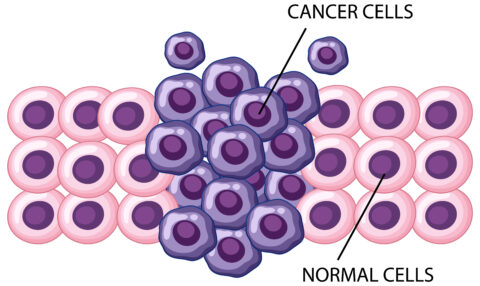In the realm of cancer diagnosis, precision is paramount. The ability to accurately detect and monitor cancer cells can make all the difference in determining the most effective treatment strategies and improving patient outcomes. One innovative tool that is revolutionizing the landscape of cancer diagnostics is the OncoCount test by RGCC. This advanced technology offers a precise and minimally invasive method for detecting circulating tumor cells (CTCs) in the bloodstream, providing valuable insights into the progression of the disease. In this article, we delve into the significance of precision in cancer diagnosis and explore how OncoCount is leading the way in this crucial aspect of patient care.
The Importance of Precision in Cancer Diagnosis
Precision in cancer diagnosis refers to the ability to accurately identify and characterize cancer cells, allowing healthcare providers to tailor treatment strategies to the unique characteristics of each patient’s disease. Traditional diagnostic methods, such as imaging scans and tissue biopsies, provide valuable information but may not always capture the full extent of the disease or detect subtle changes over time. This is where precision diagnostics, like OncoCount, play a critical role. By detecting CTCs in the bloodstream with high sensitivity and specificity, OncoCount enables clinicians to monitor disease progression more accurately and make informed decisions about treatment.
How OncoCount Works – An Overview of the Technology
OncoCount utilizes advanced technology to detect and quantify CTCs in a patient’s blood sample. The test begins with the collection of a small blood sample from the patient, which is then processed in a laboratory setting. Using a combination of immunomagnetic separation and molecular analysis techniques, OncoCount can identify and isolate CTCs from the surrounding blood cells. Once isolated, the CTCs are counted and analyzed to provide valuable information about the presence and quantity of cancer cells in the bloodstream.
Advantages of Using OncoCount in Cancer Diagnosis
One of the primary advantages of OncoCount is its ability to provide real-time information about disease progression. Unlike traditional diagnostic methods that may require invasive procedures or imaging scans, OncoCount offers a minimally invasive approach to monitoring cancer status. This allows for more frequent testing and earlier detection of changes in disease activity, enabling healthcare providers to intervene proactively and adjust treatment strategies as needed. Additionally, OncoCount’s high sensitivity and specificity ensure accurate and reliable results, reducing the risk of false positives or negatives.
Case Studies Showcasing the Effectiveness of OncoCount
Numerous case studies have demonstrated the effectiveness of OncoCount in various cancer types. For example, a study published in the Journal of Clinical Oncology found that OncoCount was able to detect CTCs in patients with metastatic breast cancer, providing valuable prognostic information and guiding treatment decisions. Another study in the Journal of Thoracic Oncology showed that OncoCount could monitor disease progression in patients with non-small cell lung cancer, allowing for timely adjustments to treatment regimens. These findings underscore the clinical utility of OncoCount in guiding personalized cancer care.
Comparing OncoCount to Traditional Diagnostic Methods
Compared to traditional diagnostic methods, such as imaging scans and tissue biopsies, OncoCount offers several distinct advantages. Unlike imaging scans, which may only detect macroscopic tumors, OncoCount can detect microscopic cancer cells circulating in the bloodstream, providing a more comprehensive assessment of disease activity. Additionally, OncoCount is less invasive than tissue biopsies, which carry risks such as infection and bleeding. By offering a non-invasive and highly sensitive approach to cancer diagnosis, OncoCount represents a significant advancement in precision medicine.
Challenges and Limitations of OncoCount
While OncoCount offers many benefits, it is not without its challenges and limitations. One limitation is the potential for false positives or negatives, which can occur due to factors such as sample contamination or technical errors. Additionally, OncoCount may not be suitable for all cancer types or stages, as some tumors may shed fewer CTCs into the bloodstream or exhibit heterogeneity in CTC populations. Furthermore, the cost of OncoCount testing may be prohibitive for some patients, limiting its accessibility in certain healthcare settings. Addressing these challenges will be crucial for maximizing the clinical utility of OncoCount in cancer diagnosis.
The Future of OncoCount in Cancer Diagnostics
Despite its challenges, the future looks promising for OncoCount and other precision diagnostics. Advances in technology and research are continually improving the sensitivity and specificity of tests like OncoCount, making them indispensable tools in the fight against cancer. As our understanding of cancer biology evolves, OncoCount may also be integrated with other diagnostic modalities, such as genomic profiling and liquid biopsies, to provide a more comprehensive picture of the disease. By harnessing the power of precision diagnostics, we can revolutionize cancer care and improve outcomes for patients worldwide.
Ethical Considerations in Using OncoCount
As with any medical technology, the use of OncoCount raises important ethical considerations. Patient privacy and informed consent are paramount, and healthcare providers must ensure that patients fully understand the implications of OncoCount testing, including the potential risks and benefits. Additionally, healthcare disparities must be addressed to ensure equitable access to precision diagnostics like OncoCount for all patients, regardless of socioeconomic status or geographic location. By upholding ethical principles and promoting transparency in the use of OncoCount, we can ensure that this groundbreaking technology benefits patients while respecting their autonomy and dignity.
Conclusion – The Significance of Precision in Cancer Diagnosis and the Potential Impact of OncoCount
In conclusion, precision matters in cancer diagnosis, and OncoCount is at the forefront of precision diagnostics. By accurately detecting and monitoring CTCs in the bloodstream, OncoCount offers a valuable tool for guiding personalized treatment strategies and improving patient outcomes. Despite its challenges, OncoCount holds great promise for the future of cancer diagnostics, offering a non-invasive, sensitive, and reliable approach to monitoring disease progression. As we continue to explore the potential of precision medicine, OncoCount stands as a shining example of the power of innovation in the fight against cancer.

